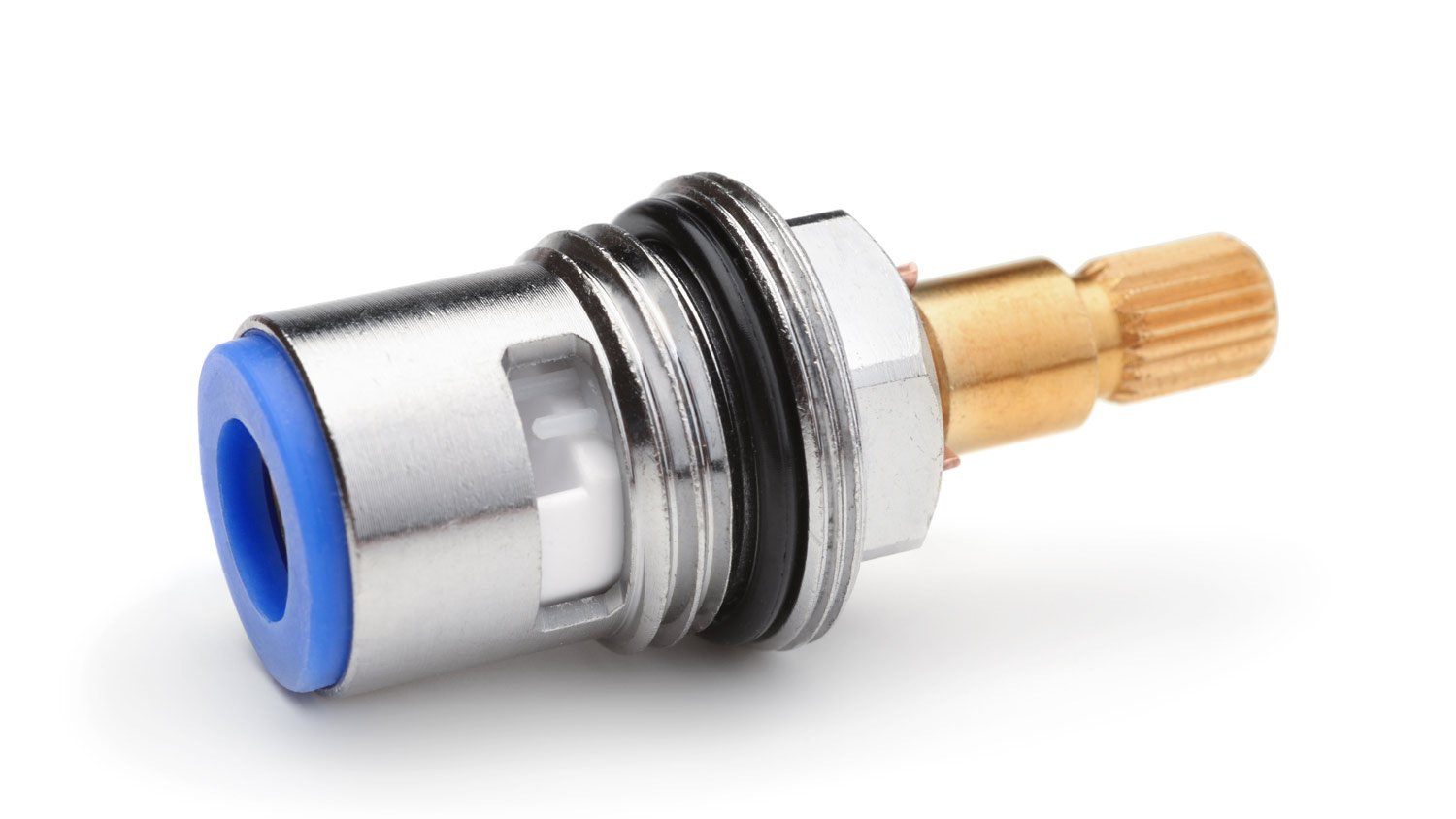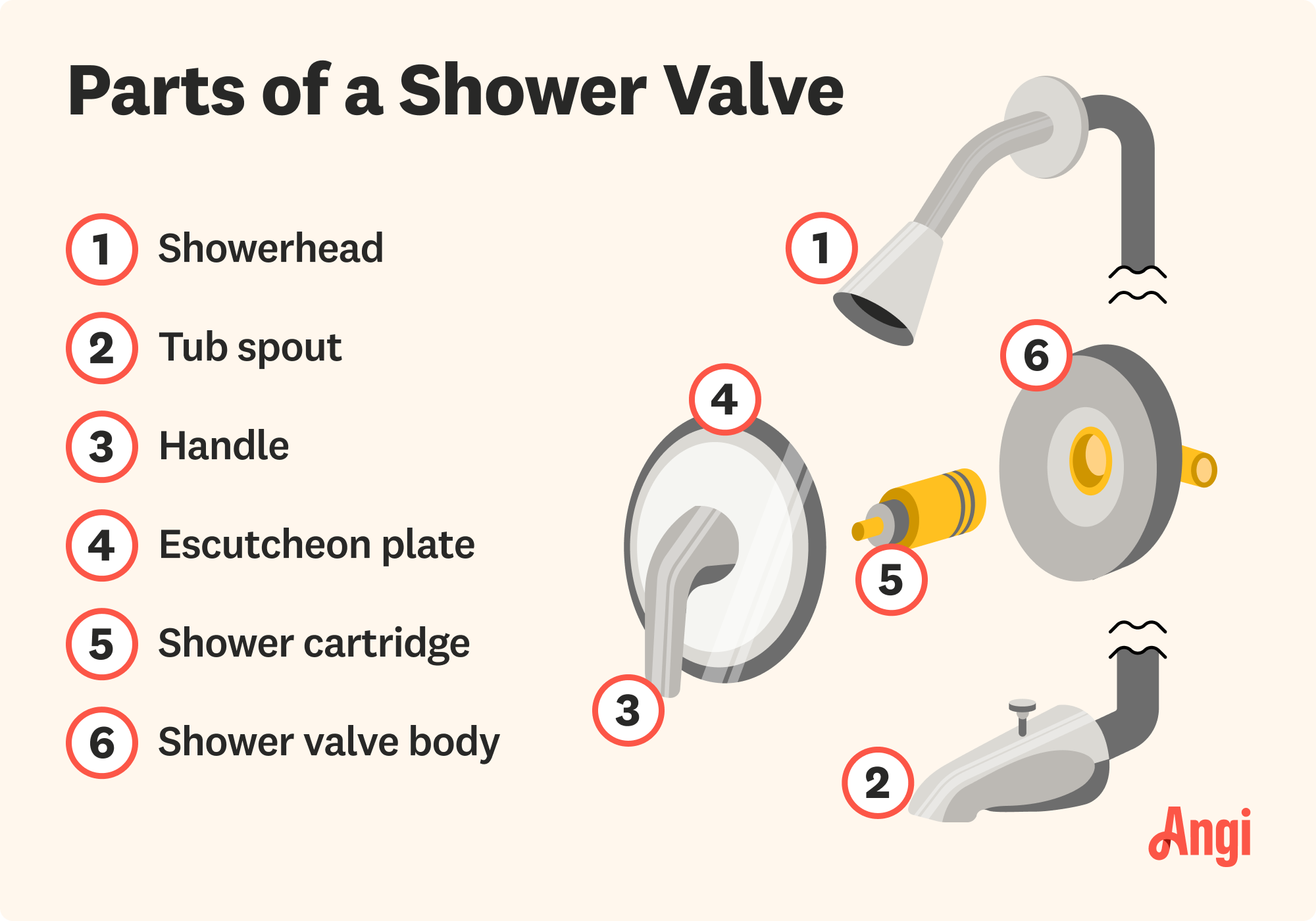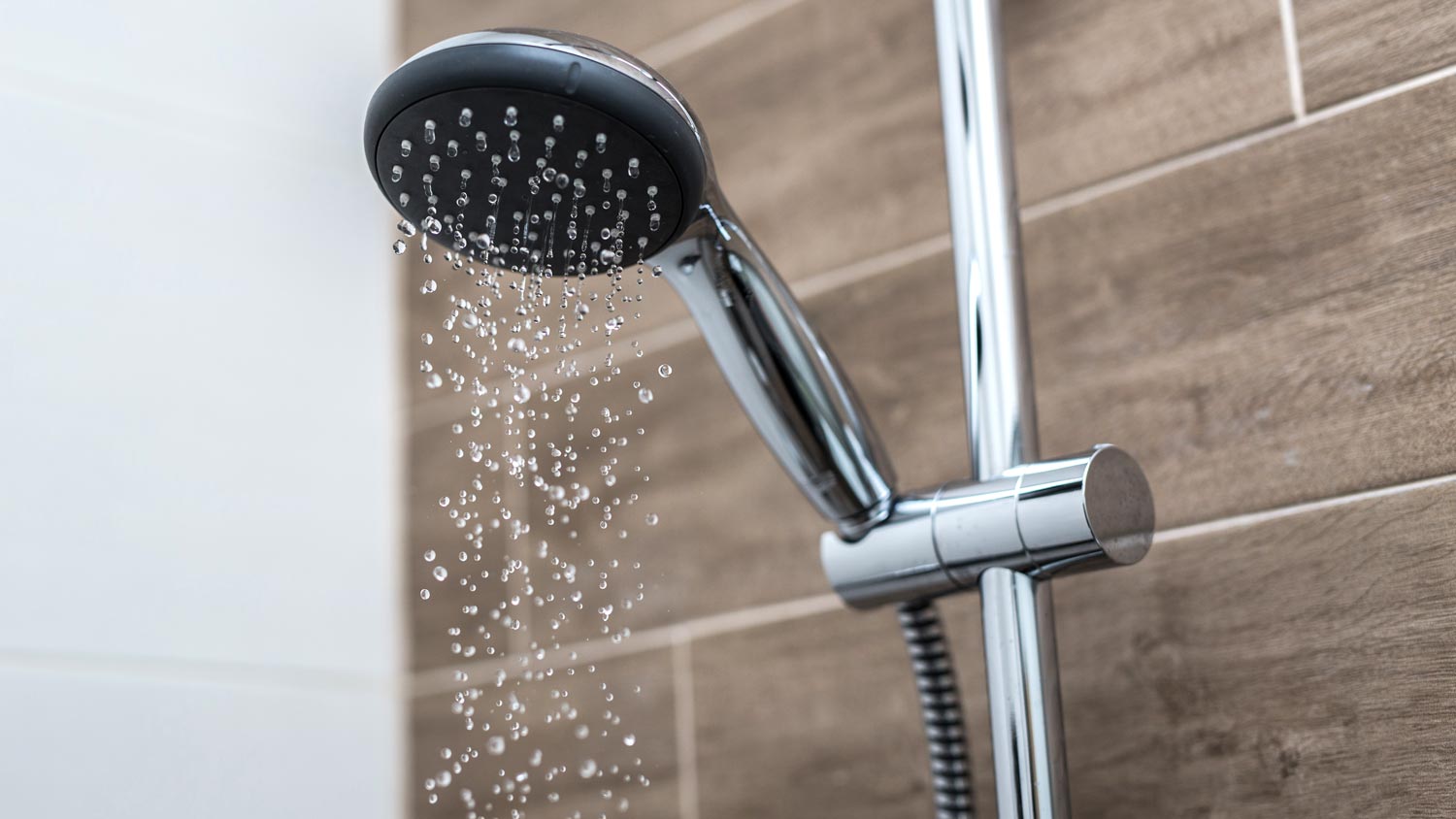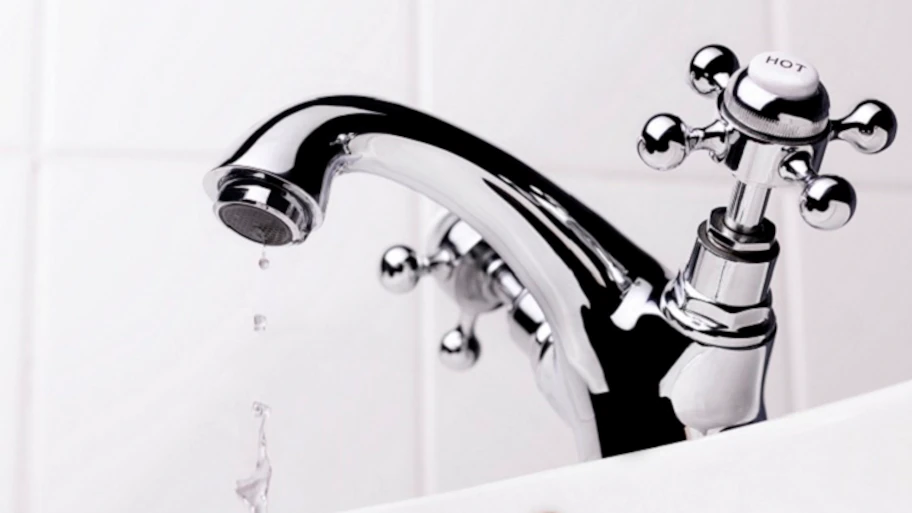
The costs for common plumbing issues are determined based on parts, labor, and expertise level. Read our guide to find out how much you should budget.
This overlooked component is the key to having a functional shower


Shower cartridges regulate the flow and temperature of water.
Shower cartridges are a key part of the shower valve.
Different types of cartridges have slightly different mechanics.
Most modern showers use thermostatic or pressure balance cartridges.
A consistently leaky showerhead is a sign you may need a new shower cartridge.
Most of us don’t think too deeply about the mechanics of our shower. When we turn it on, it’s on. Too cool or too hot? When we turn the controls to adjust the temperature, behind those controls is a tiny component called a shower cartridge. This small piece is the engine of your shower. So, what is a shower cartridge, and how does it work? This guide will tell you what you need to know.

A shower cartridge—also known as a shower valve cartridge—is a small component that sits inside the shower valve behind your shower controls. It connects the valve to the controls, regulating the flow and temperature of the water.
In modern showers with one handle, the shower cartridge controls temperature and flow at the same time. Older showers may have dual handles, where separate handles control the hot and cold water. In this type of shower plumbing design, each handle may have its own individual cartridge or share a single cartridge. This style is being phased out in new construction because of the risk of scalding.

Depending on the type, a shower cartridge can have up to three functions. Here’s how it works:
Regulating water temperature: The shower cartridge has inlets for both hot and cold water. When you turn the temperature controls in your shower, the cartridge shifts inside the shower valve, allowing the proper amount of water to flow through from either side to achieve the desired temperature.
Controlling the flow of water: When you turn the shower controls, your cartridge shifts inside the shower valve, allowing a certain amount of water to pass through. It's how you turn your shower on, off, and everything in between.
Prevents water from becoming dangerously hot: Some cartridges can balance pressure or stick to a set temperature, which helps protect against scalding.
You’ll find different types of cartridges in different types of shower valves. It depends on the design.
Flow cartridges, known as on/off or control cartridges, only control the flow of water from a showerhead, not the temperature. You can find them in older dual-handle showers, where you manually adjust the temperature using separate hot and cold controls. You can also use this type of cartridge with a diverter system to regulate the flow between outlets.
A mixing cartridge is an essential component inside single-handle showers or dual-handle showers that only use a single cartridge. This cartridge controls both the temperature and flow of water, essentially mixing the hot and cold water lines. It doesn’t handle sudden water pressure changes well, so the temperature can fluctuate if, for example, someone flushes a toilet while you’re in the shower.
Thermostatic cartridges are used in thermostatic valves. They’re similar to mixing cartridges, controlling both the temperature and flow of the water. The difference is they automatically adjust your water to a preset temperature, which protects against scalding or uncomfortable bursts of cold. These are common in new showers.
Pressure balance cartridges are found inside pressure balance valves. Instead of monitoring temperature levels like a thermostatic cartridge, pressure balance cartridges focus on maintaining the pressure balance between the hot and cold water lines. With consistent pressure comes consistent temperature, which protects against scalding and uncomfortable bursts of cold.
A diverter cartridge is used in a tub–shower combo. This cartridge sits in the diverter valve and helps direct the flow of water from one outlet (such as the tub faucet) to another (such as the shower head).

Shower cartridges usually last 10 to 30 years. Towards the end of its lifespan, you may notice a few signs that you need to replace your shower cartridge:
Leaking or dripping from your showerhead
Reduced water pressure
Difficulty turning the handle
Visible damage
Inconsistent water temperature
Some handy homeowners have the experience to replace a cartridge on their own, but it can take some serious trial and error for the average person. Even ordering a compatible shower cartridge can be a challenge. For this reason, it’s a good idea to hire a local plumber.
From average costs to expert advice, get all the answers you need to get your job done.

The costs for common plumbing issues are determined based on parts, labor, and expertise level. Read our guide to find out how much you should budget.

Repairing a main water line is an urgent matter, so use this guide to get an idea of how much main water line repairs cost to act fast.

This guide to toilet installation cost covers what you can expect to pay when adding a new toilet to an existing or new bathroom.

Wondering why your bath water is yellow? Find out what’s causing it, how to solve the problem, and when to call a plumber.

Common bathroom leak signs include mold, musty smells, warped walls or ceilings, and more. This guide will help you learn the signs that your bathroom has a leak.

The hidden parts of your shower drain keep everything flowing. Reference our shower drain plumbing diagram to understand how your shower drain works.